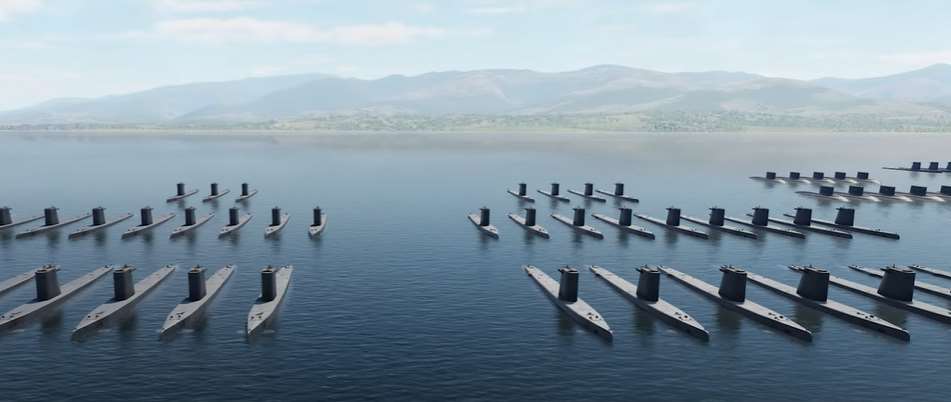Pentagon War Games: Assessing Chinese Invasion of Taiwan
The geopolitical tension between the United States and China has always been a subject of global concern, with Taiwan being a crucial flashpoint in this complex relationship. Recently, the Pentagon has been conducting war games to evaluate the potential outcomes of a Chinese invasion of Taiwan. These exercises offer a glimpse into the strategic decisions and military preparedness required to navigate such a challenging scenario.
Unlike traditional military drills, war games are sophisticated simulations that explore various hypothetical situations. They involve intricate planning, deployment of resources, and strategic maneuvers aimed at anticipating the moves of adversaries. The objective is to simulate real-life situations as closely as possible, thereby providing military strategists with valuable insights into potential outcomes and strategies.
The Objectives of Pentagon War Games
The primary objective of the Pentagon war games is to assess the capabilities and readiness of U.S. forces in the event of a Chinese invasion of Taiwan. These simulations focus on several key areas:
- Assessing Military Readiness: Determining whether U.S. forces are adequately prepared to respond to a swift and coordinated invasion by Chinese forces.
- Resource Allocation: Evaluating the allocation of resources, including troops, equipment, and logistics, necessary to support a sustained defense of Taiwan.
- Regional Alliances: Examining the role of regional allies and partners in the defense strategy, including Japan, South Korea, and Australia.
- Cyber Warfare: Analyzing the impact of cyber warfare on communication, intelligence, and battlefield operations.
- Air and Naval Dominance: Investigating the effectiveness of air and naval forces in maintaining control over critical sea lanes and airspace.
Stages of the War Game
The war games simulation typically unfolds in several stages, each focusing on different aspects of the conflict:
- Phase 1: Pre-Invasion Intelligence Gathering: During this initial stage, intelligence agencies gather information on Chinese military movements, potential invasion routes, and logistical preparations. This phase is crucial for foreseeing potential invasion plans and preparing defensive strategies.
- Phase 2: Initial Invasion: In this phase, Chinese forces launch a multi-pronged invasion targeting key strategic locations in Taiwan. The simulation assesses the effectiveness of Taiwan’s initial defensive measures and the speed at which U.S. forces can respond.
- Phase 3: Counteroffensive: Once U.S. and allied forces are engaged, the focus shifts to counteroffensive operations. The simulation evaluates the ability to reclaim territories, logistics of reinforcing troops, and sustaining a prolonged conflict.
- Phase 4: Cyber and Electronic Warfare: This stage examines the role of cyber and electronic warfare in disrupting command and control systems, communications, and critical infrastructure. Both sides utilize cyber tactics to undermine each other’s capabilities.
- Phase 5: Diplomatic and Economic Impact: The final phase addresses the broader geopolitical ramifications, including potential economic sanctions, diplomatic negotiations, and international alliances. This stage emphasizes the importance of comprehensive strategies beyond just military might.
Key Learnings and Challenges
The war games reveal several critical insights and challenges that decision-makers must address:
- Rapid Response Capabilities: The need for rapid deployment of forces is underscored. Any delay in response time can have significant strategic implications.
- Cybersecurity Preparedness: The repercussions of cyber warfare highlight the necessity of robust cybersecurity measures and resilient communication systems.
- Logistical Challenges: Sustaining a prolonged defense effort requires efficient logistical support, including supply chains, medical aid, and infrastructural resilience.
- Coordination with Allies: The critical role of regional allies cannot be overstated. Diplomacy and coordinated military strategies with allies are essential for a unified defense.
- Public and Political Support: Ensuring public and political backing for military actions is vital for maintaining morale and securing continued support for the defense strategy.
Speculative Table: Operational Capabilities Evaluation
Below is a speculative table summarizing key operational capabilities and their potential effectiveness in the simulated scenario:
| Capability | Effectiveness |
|---|---|
| Rapid Deployment | High |
| Cyber Defense | Moderate |
| Air Superiority | High |
| Naval Dominance | Moderate |
| Logistical Support | Moderate to High |
| Allied Coordination | High |
The Pentagon’s war games underscore the complexity and gravity of a potential Chinese invasion of Taiwan. Through detailed simulations, military strategists gain valuable insights into operational readiness, resource allocation, and strategic coordination. While the outcome of such a conflict remains unpredictable, these exercises highlight the importance of preparedness, alliance-building, and adaptable strategies in maintaining regional stability and global peace.









